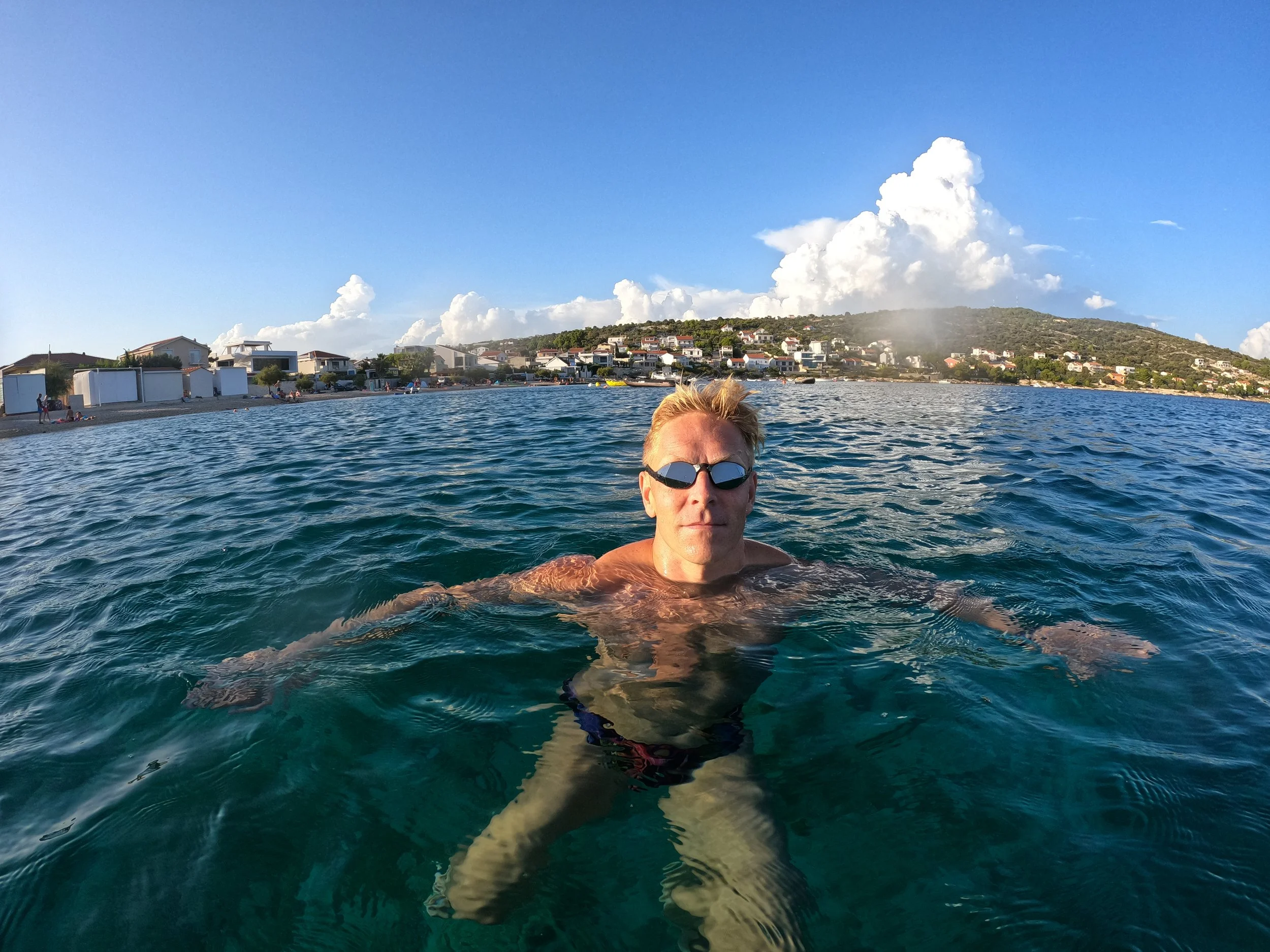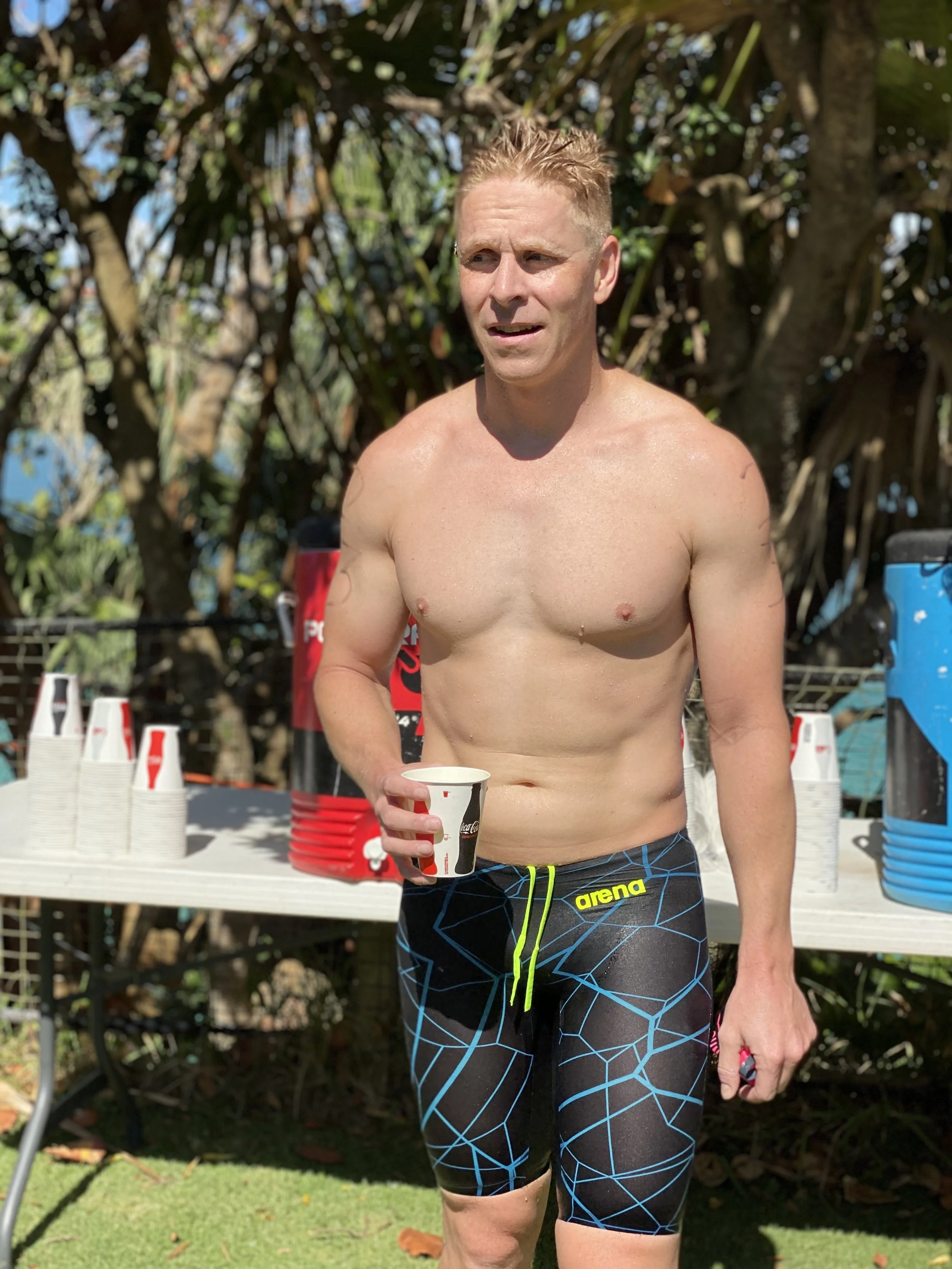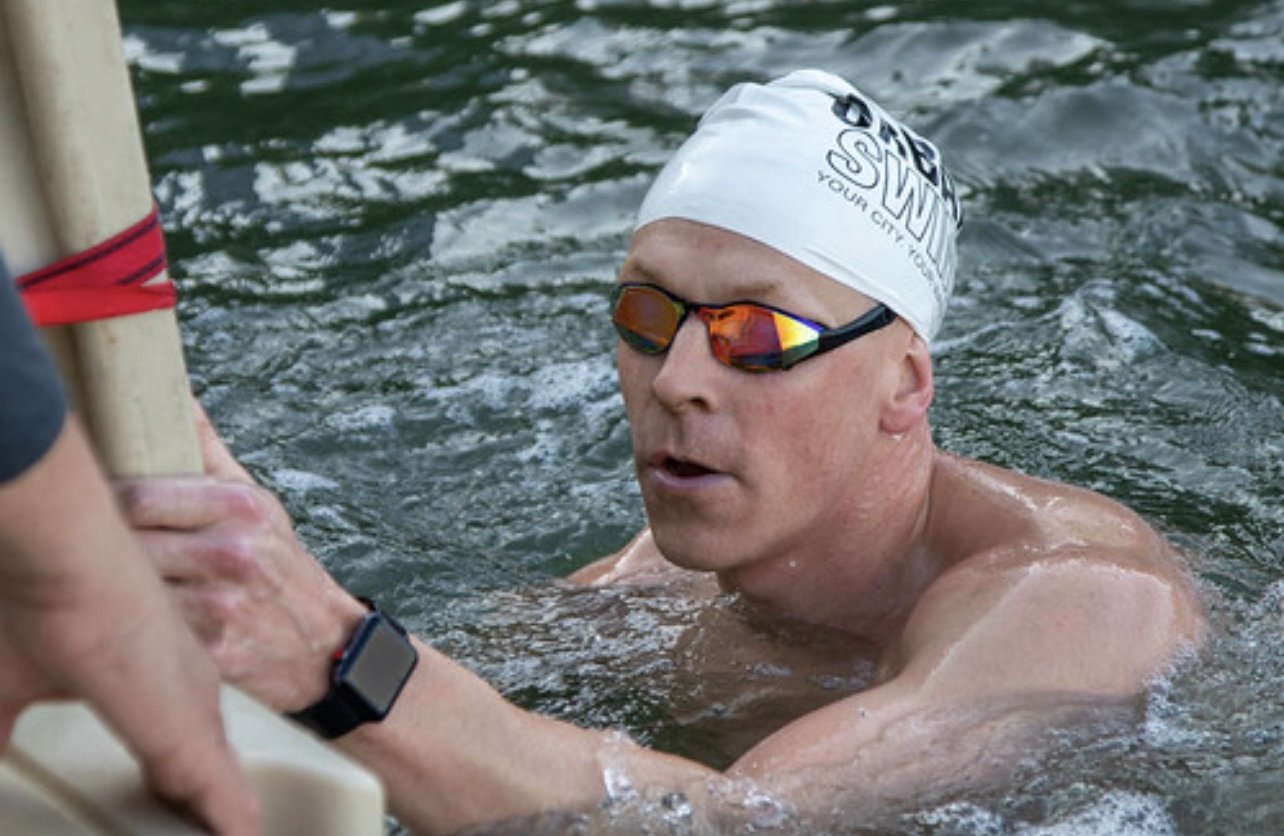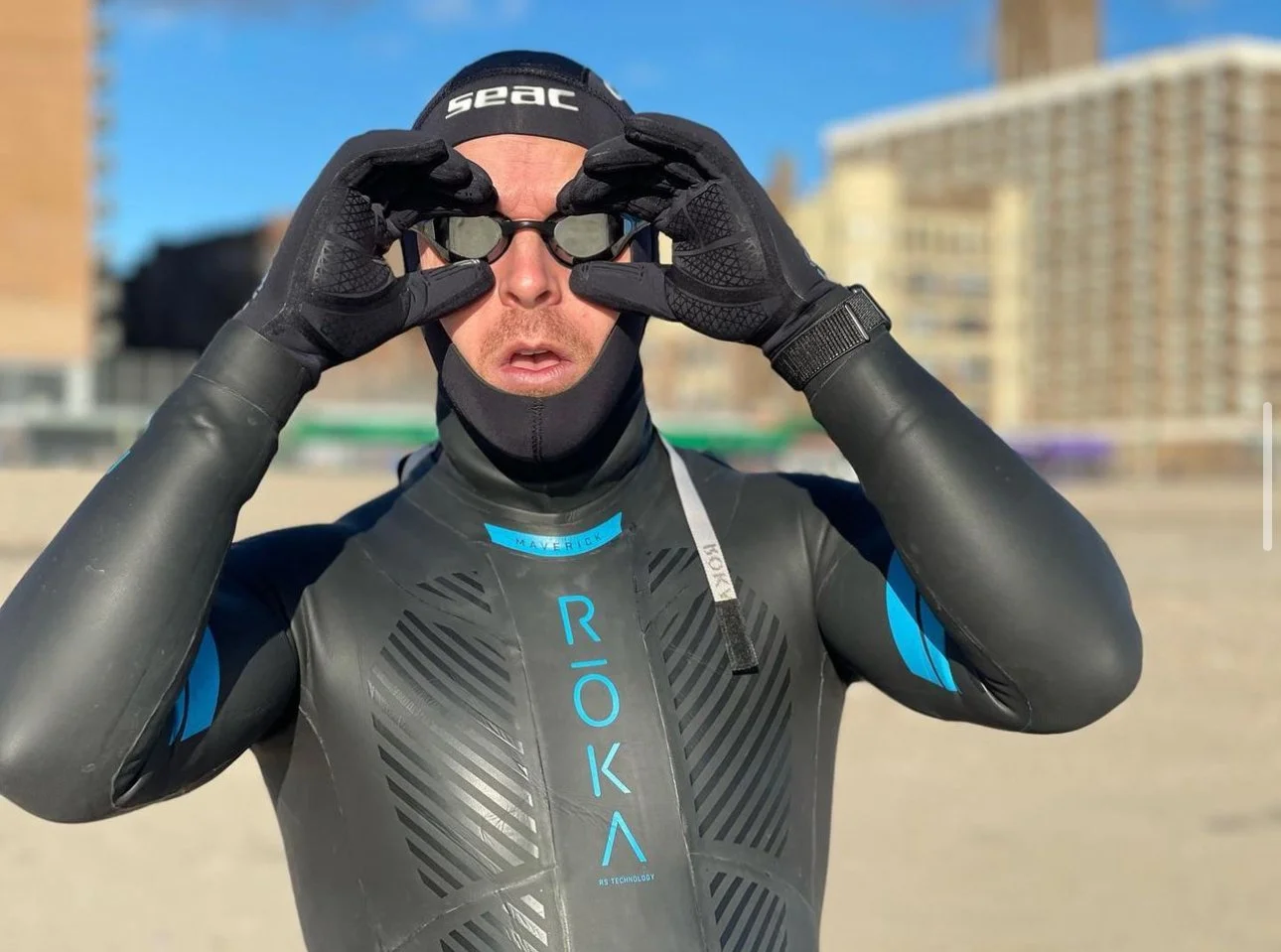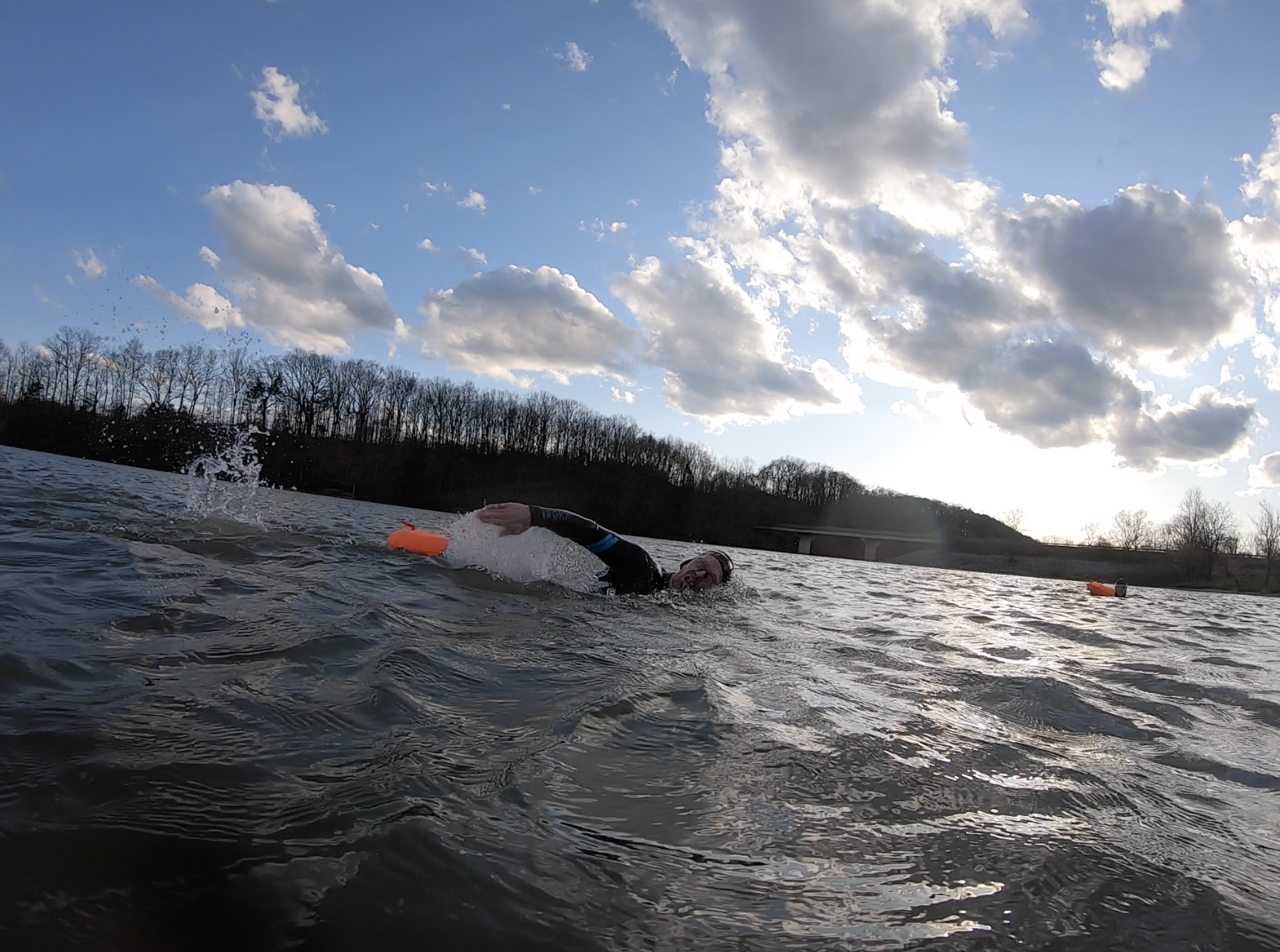Exploring How Water Temperature Affects Swimming Paces
/80F/26C - August - Adriatic Sea - Croatia
How Water Temperature Impacts Swimming Performance and Pace
Water temperature can indeed impact swimming paces and performance. Warm and cold water temperatures can have both positive and negative effects on swimmers:
78F/25C - OCtober - Bermuda - 10k Around The sound Swim
Optimal Temperatures for Racing
Warm Water Temperature
Warm Water (above 84°F or 29°C): In water that's too warm, swimmers may experience discomfort, overheating, and even heat exhaustion. Performance can be negatively affected as muscles might fatigue more quickly, and there's a risk of dehydration due to increased sweating.
Moderate Water
Moderate Water (around 77-82°F or 25-28°C): This range is generally considered optimal for competitive pool training and racing. Muscles function well, and swimmers can maintain a good pace without being hindered by the temperature.
Cool Water Temperature
Cool Water (below 60-70°F or 15-21°C): In colder water, swimmers might experience decreased muscle function and increased resistance due to the denser water. This can result in slower paces and reduced performance. Cooler water, depending on time spent in the water, effort level, and body fat percentage, can also lead to hypothermia, which affects coordination and can be dangerous.
70F/21C - September - Hudson River, New York City
English Channel Water Temperature
Challenging Cold Waters (50-60°F or 10-15°C): The English Channel, one of the most iconic channel swims, is known for its challenging water temperature, which can range from around 50°F (10°C) in summer to even colder temperatures in other seasons. The North Channel presents a formidable challenge, especially during the shoulder seasons when temperatures drop. Swimmers attempting the North or English Channel often require extensive training and must be prepared for the physical and mental challenges posed by these waters.
Find out how long it takes to swim the English Channel and what to expect during your swim by reading our comprehensive guide
42F/5C January - Atlantic Ocean - BRighton Beach, Brooklyn
Swimming in the Chill: How Cold Is Too Cold?
Ice Cold Water (Below 40°F or 5°C): Ice swimming enthusiasts embrace the extreme by venturing into waters well below typical freezing temperatures. Ice swimmers push their limits by confronting icy conditions, often without wetsuits. Ice Swimming, as defined by IISA (International Ice Swimming Association), involves swimming without assistance in water temperatures of 5.0°C or lower. Swimmers are only allowed to wear a standard swim suit, a pair of goggles, and one silicone cap while adhering to IISA safety and swimming regulations.
Adapting to Water Temperature
It's important to note that individuals may respond differently to water temperatures. Some swimmers might find colder water more comfortable and conducive to better performance, while others could face difficulties. The ideal water temp for swimming often varies depending on personal preference and the activity's purpose. Competitive swimmers typically target water temperatures in the moderate range to optimize their performance. Moreover, extended exposure to cold water can hinder performance due to the body's natural thermoregulation mechanisms.
Your tolerance for a specific temperature can improve through safe and gradual exposure to that temperature, whether for longer durations or more frequent sessions. Factors such as body composition and your body's natural bioprene levels also influence this tolerance. Additionally, your choice of swimwear, including suits, caps, and various neoprene accessories with different coverage and thicknesses, can impact your swimming experience. It's essential to consult the governing body you intend to participate with to understand the regulations regarding swimming gear.
50F/10C - March - Blue Marsh LAke, Pennsylvania
Swimming in various water temperatures demands adjustment of strategies and techniques. In warmer water, it's crucial to focus on hydration and employ effective cooling methods. Conversely, colder water calls for adequate warming-up and possibly wearing thicker swimwear to reduce heat loss. Before any swim, it's essential to have a plan in place for rewarming, cooling down, or handling emergencies. It's advisable to educate yourself, practice with experienced swimmers or coaches, prioritize safety, and, most importantly, enjoy your swim!
-
Yes, water temperature can significantly impact swimming speed. Warmer water (above 84°F or 29°C) may cause muscles to fatigue faster, leading to slower speeds, while colder water (below 70°F or 21°C) can decrease muscle function and coordination, also affecting performance. The ideal range for optimal speed and performance is generally between 77-82°F (25-28°C).
-
Not always. While some swimmers may initially feel energized in cooler water, prolonged exposure can decrease muscle efficiency, slow stroke rate, and hinder overall speed. Extreme cold can lead to hypothermia, making it difficult to swim efficiently. However, moderate cool temperatures may benefit certain swimmers who can handle the cold better.
-
Cold water for swimming is generally considered to be below 70°F (21°C). Extreme cold, like temperatures between 50-60°F (10-15°C), can pose serious risks such as hypothermia and require special training and precautions. Ice swimming involves even colder temperatures, usually below 40°F (5°C).
-
Warm water temperatures for swimming are typically above 84°F (29°C). In such conditions, swimmers may be at risk of overheating and dehydration. It’s important to stay hydrated and monitor your body closely to avoid heat-related issues when swimming in warm water.
-
A comfortable water temperature for most swimmers is between 77-82°F (25-28°C). This range allows muscles to function efficiently without the risk of overheating or getting too cold, making it ideal for both training and competitive swimming. Personal preference and acclimatization also play a role in what feels comfortable.

